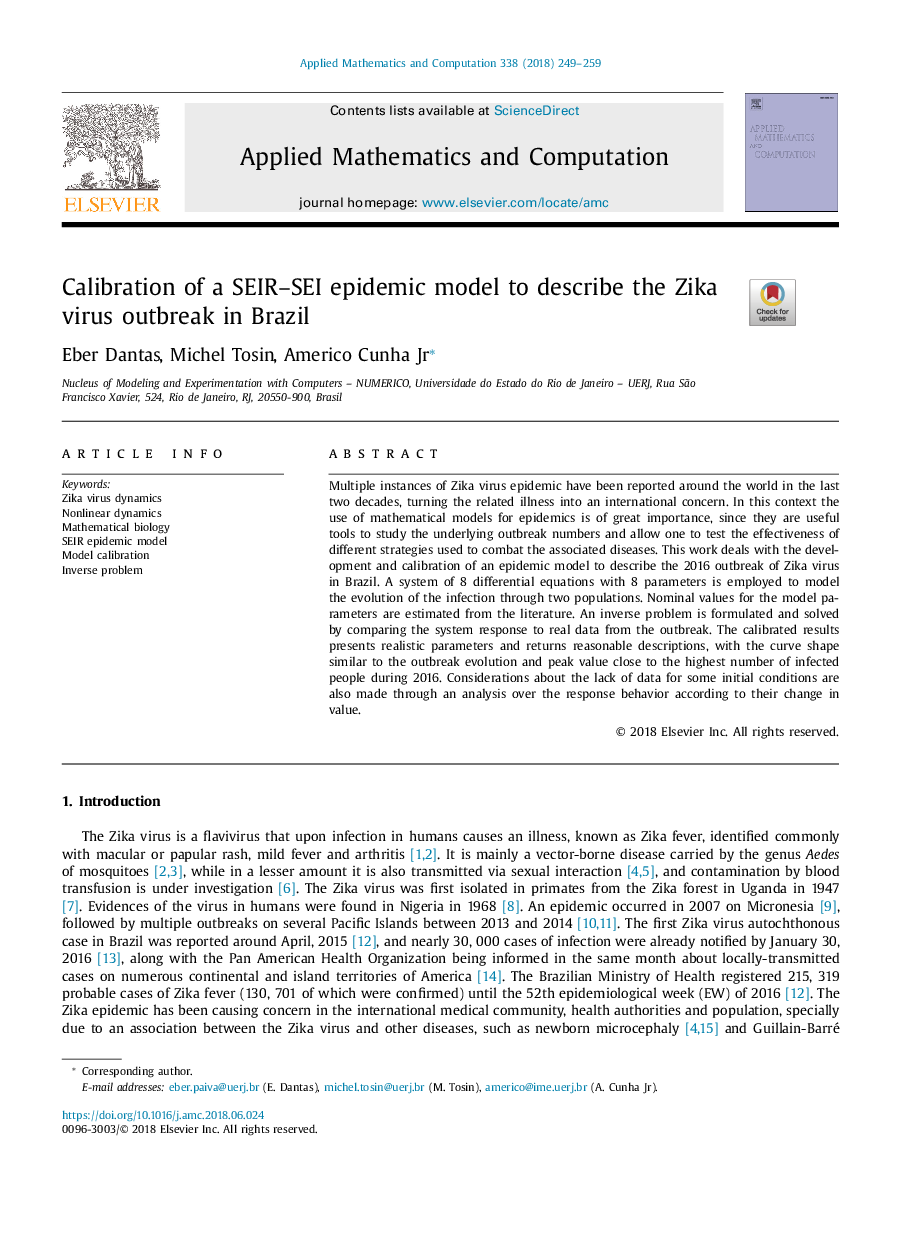| Article ID | Journal | Published Year | Pages | File Type |
|---|---|---|---|---|
| 8900611 | Applied Mathematics and Computation | 2018 | 11 Pages |
Abstract
Multiple instances of Zika virus epidemic have been reported around the world in the last two decades, turning the related illness into an international concern. In this context the use of mathematical models for epidemics is of great importance, since they are useful tools to study the underlying outbreak numbers and allow one to test the effectiveness of different strategies used to combat the associated diseases. This work deals with the development and calibration of an epidemic model to describe the 2016 outbreak of Zika virus in Brazil. A system of 8 differential equations with 8 parameters is employed to model the evolution of the infection through two populations. Nominal values for the model parameters are estimated from the literature. An inverse problem is formulated and solved by comparing the system response to real data from the outbreak. The calibrated results presents realistic parameters and returns reasonable descriptions, with the curve shape similar to the outbreak evolution and peak value close to the highest number of infected people during 2016. Considerations about the lack of data for some initial conditions are also made through an analysis over the response behavior according to their change in value.
Related Topics
Physical Sciences and Engineering
Mathematics
Applied Mathematics
Authors
Eber Dantas, Michel Tosin, Americo Cunha Jr,
